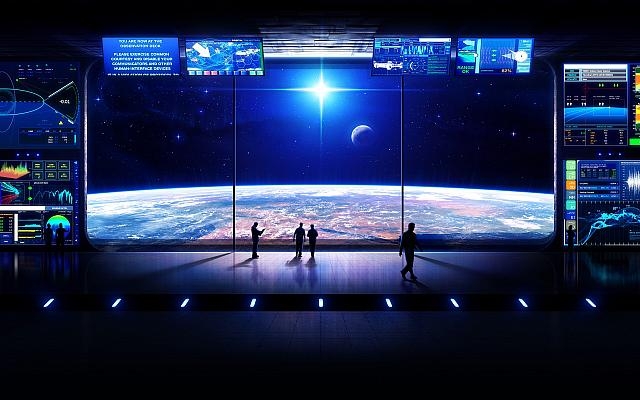
Putting the "Science" in "Science Fiction" – Space Travel 4: Artificial Gravity
Science fiction is so filled with starship crews walking and running around their vessels… it is easy to forget that in reality astronauts spend their time in space weightless. Although floating around inside a spacecraft may be enjoyable, long-term weightlessness has many negative effects on human health. Long periods of zero gravity cause muscular, skeletal and circulatory problems.

Scientists have been attempting to find a way to create artificial gravity for decades. Unfortunately, the way gravity works makes it very difficult to create it artificially. Gravity is created by mass, and so in order to create true gravity equal to that of Earth, a mass the size of Earth would need to somehow be simulated. This option is impossible, and so researchers have been working for decades to find other ways to simulate gravity’s effects without truly creating gravity. There are two main plans for creating artificial gravity for spacecraft, and though they face technical challenges in construction, the ideas behind these plans are actually fairly simple.
Rotation is probably the most commonly known proposal to create artificial gravity, and involves rotating a spacecraft or part of one while it travels through space. This rotation would create a centrifugal force that would push objects and people inside the spaceship towards the hull, creating the illusion of gravity. The technology and principles are fairly simple, but there are a few concerns with such a system.
Testing under controlled conditions has shown that people can experience nausea, dizziness and other negative effects, although they can also grow accustomed to the rotation with time. Unless steps are taken to prevent it, there can also be differences in centrifugal force within a rotating vessel, meaning that gravity may feel stronger towards the outside than in the center. These issues are fairly minor and can be nullified with proper planning, and rotating an entire spacecraft is very simple. However, rotating only part of one adds mechanical complexity and power requirements, and so it is likely that if a rotational ship were built, it would rotate the entire craft rather than only sections.
The other main theory for creating artificial gravity in a spacecraft is called linear acceleration, and is also a very simple concept. In linear acceleration, a spacecraft is constructed vertically, like a tower, with the engines at the bottom rather than placing the engines at the rear.

In a craft that used linear acceleration, the engines would fire constantly throughout the entire journey and the reaction force created by the engines would push people and objects within the ship towards the rear. Since the decks are arranged parallel to the ship’s rear, this would simulate gravity. A linear acceleration vessel would continue to accelerate for the first half of the voyage, then rotate and fire its engines in the opposite direction for the second half of the voyage, decelerating it enough to safely arrive at its destination while simulating gravity the entire time.
Linear acceleration has many advantages over rotation, as it would require no additional mechanical components in construction, and the gravity it simulates would be identical throughout the ship. The main factor that has prevented linear acceleration from being researched to a greater extent is that no modern spacecraft could carry enough fuel to run continuously for an entire journey through space. However, as engines that require very little fuel and operate with fairly low thrust – such as ion and plasma engines – become feasible, spacecraft that use linear acceleration to create gravity will likely become a much more feasible idea.
The reliable creation of artificial gravity is necessary in order to allow astronauts to stay healthy for long periods in space. Whether the spacecraft of the future generate gravity through rotation, linear acceleration or the “gravity plating” of Star Trek, the economical use of artificial gravity will greatly reduce the risks and training requirements for space flight – while increasing the number of people who have the chance to travel to the stars.

(A gravity plate was used to simulate a gravity environment on starships. Gravity plating could be lined along a ship’s exterior hull, or across the interior deck plates. – Memory Alpha – The Star Trek Wiki)
Top Photo: unspeakable.org









